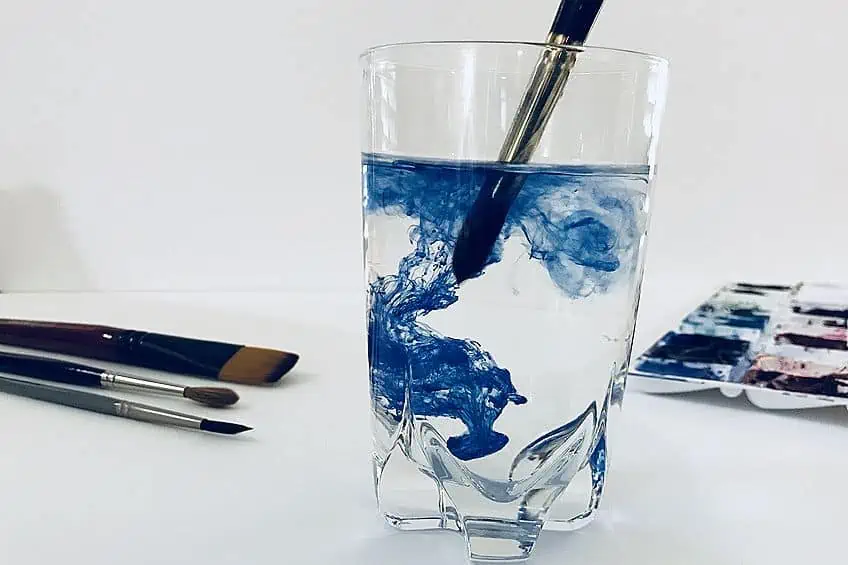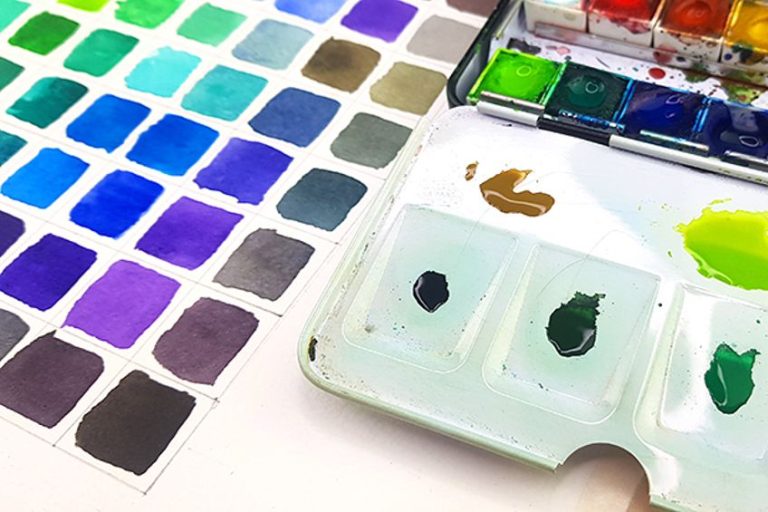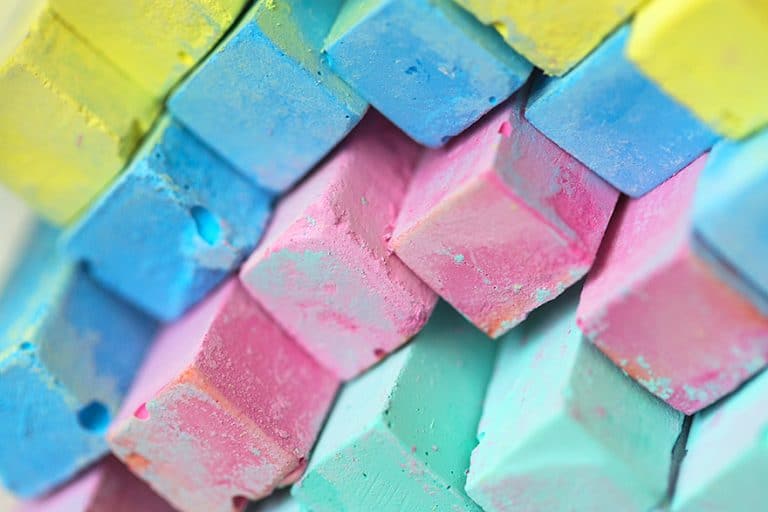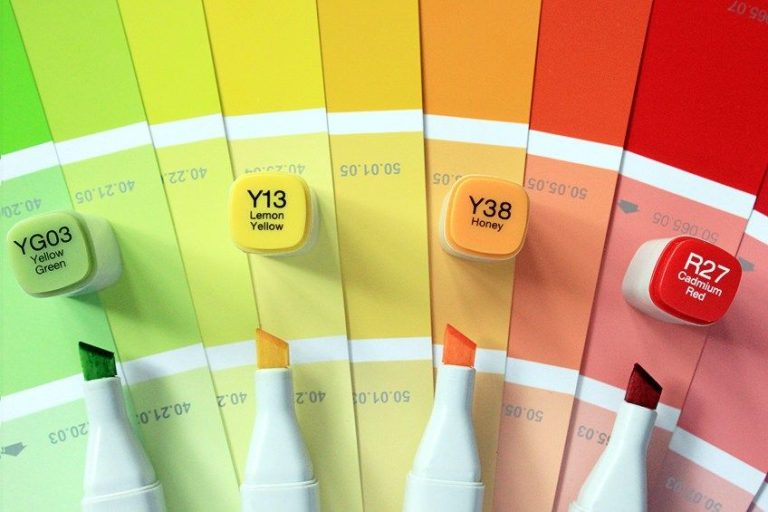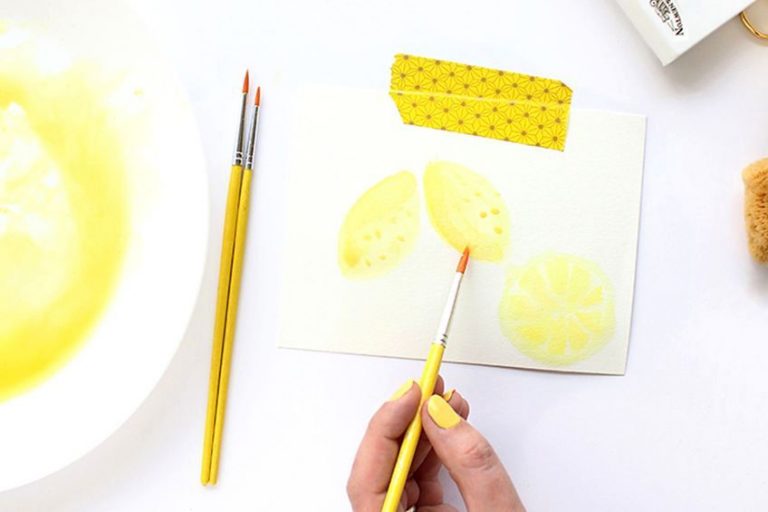How to Clean Paintbrushes – Ultimate Guide for Paint Brush Cleaning
This post may contain affiliate links. We may earn a small commission from purchases made through them, at no additional cost to you.
Unfortunately, no matter how organized you are, or practiced at painting, there will always be that person who forgets to wash the paintbrushes. Perhaps you do not really know the proper way as to how to wash paintbrushes. As artists, most of us have been there, sometimes we are just lazy, and other times we are just in too much of a rush and completely forget. Often, we do not really know how to clean a paintbrush properly! This means that when you need to work with your brushes again, you are faced with more work than you bargained for because all the paint has dried and crusted and needs to be cleaned off before you can use them. This is an explanatory and descriptive guide that will explain how to clean paintbrushes. This will include the best paintbrush cleaner available on the market, as well as the best method on how to clean old paintbrushes, and clean paint brushes that have dried paint on the bristles. Read on if you want to learn how to remove dried paint from brushes, the right way!
Table of Contents
- 1 The Importance of Cleaning Paint Brushes
- 2 Different Parts of a Paint Brush
- 3 What Cleaning Paint Brushes Entails
- 4 Other Practices to Preserve and Protect Your Paint Brushes
- 5 Frequently Asked Questions
The Importance of Cleaning Paint Brushes
Let us face it, we all have that person in our lives that is slightly air-headed. They might not have even noticed their lack of diligence but they once again left your paintbrushes out and they still had paint on them! As if the art of painting was not expensive enough! Now you are forced into buying a whole new set of paintbrushes because you do not know how to clean dried paintbrushes. Or, you were working with a serious deadline that got delayed yet again because someone forgot to set your brushes in water or the appropriate paintbrush cleaner.
It is important to keep them clean and it is important to know how to get dried paint out of paintbrushes without damage. Not only for your expenditure, but it also keeps your favorite paintbrush that has bristled and molded to paint with perfection, in a better condition for longer. Paint that dries on the bristles can fray the bristle quality, making it hard to achieve finer detail.
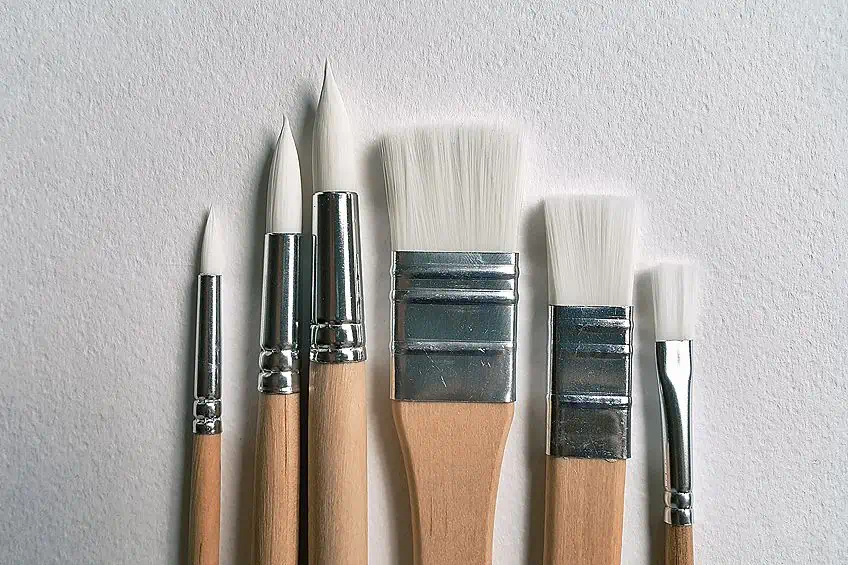
Of course, cleaning paintbrushes is best done as a preventative method. Which means they should be soaked right after use. But, as most of us have experienced, this part is often overlooked. This means more drastic measures need to be taken to get them to be clean paintbrushes again.
Therefore, knowing how to clean paint brushes is crucial if you want your brushes to last. If you have ever wondered how to get dried paint out of paintbrushes, we will explain the process of how to remove dried paint from brushes in our detailed guide that follows.
Different Parts of a Paint Brush
Are you aware of the purpose of the other parts of a paintbrush? If you were wondering how to remove dried paint from a paintbrush, or just how to clean a paintbrush generally, you must learn the anatomy of the tool first. The best way to clean paint brushes, to understand them first. For your educational benefit, we have named the three parts of a paintbrush so that you may enlighten yourself.
| Paint Brush Parts | The Purpose | Appropriate Care |
|
Handle | The handle is what you grip onto when working with a paintbrush. They are more than often wooden, but occasionally plastic as well. | The handle of your paintbrush does not require much intensive care. Simply wipe the paint from the handle with a wet cloth.
|
| Ferrule | This is the conjoining part for the handle and the bristles.
| It is essential to dry the ferrule of your paintbrush before you think you are finished cleaning. Any water that drips into the inside of it will cause the glue to erode and the bristles to fall out.
|
|
Bristles | This is the focus point of your paintbrush. It is the part that you dip into the paint and use to paint with. There are two types of bristles for paintbrushes, either natural or synthetic made. | Paint brushes’ bristles should be rinsed immediately after use – this is something that should be taught from the early days of childhood. This will help to preserve the purity of your paint’s color by not dipping yellow into the blue. |
What Cleaning Paint Brushes Entails
This has been spoken of before this, but we will reiterate it. The best cleaning method is a preventative method. Make sure that the moment you have finished with the paintbrush, you rinse the wet paint off. Just keep thinking of how smooth the art experience will be if you do not have to start with a hefty cleaning mission before you can start painting – it will be worth it in the end. The next section that follows will cover all of the information on how to wash paintbrushes.
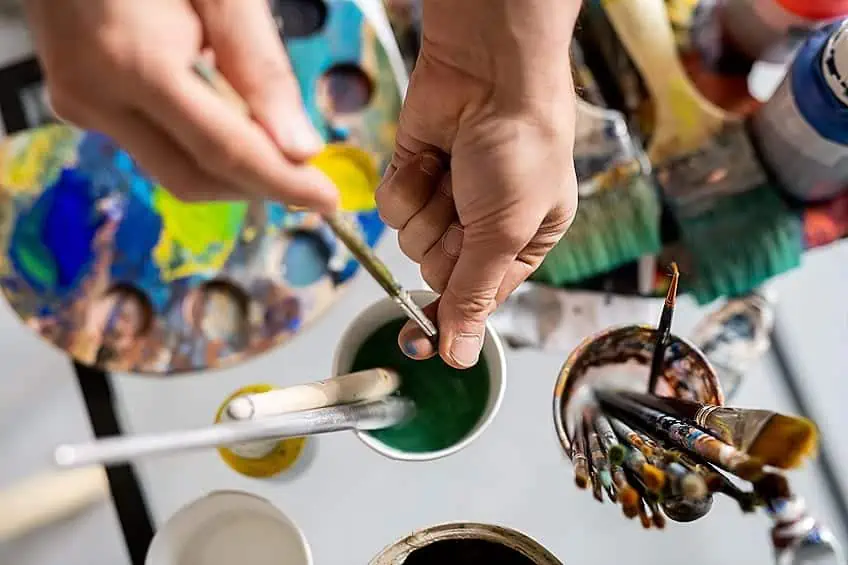
How to Get Dried Paint out of Paintbrush with Soapy Water
If the question of how to clean a paintbrush arises, it is a good idea to be aware of the type of paint you have been working with before you attempt the wrong method. Using soap and water to clean your brushes will only work for water-based paints, like acrylic or watercolor paints. Dishwashing soap is perfectly acceptable, but there are some specially designed artist’s soaps that work very well in comparison. We will first discuss the best way to clean paintbrushes, and then we will discuss the ultimate soaps meant for cleaning paint brushes and how to clean a paintbrush correctly.
Instructions on Cleaning Paint Brushes with Soap
Before you even think about packing up your paint when you are finished painting, you need to make sure you clean your brushes first. This will become a routine eventually – after you make a habit out of it. Read on to see each step you should take.
- This step is often overlooked by most painters, hobbyists, and DIY experts. Before you think you are finished painting, wrap the paintbrushes that you just used to paint in a highly absorbent cloth and squeeze all of the residual water and paint out of the bristles.
- The next step, which is often thought to be the first, is to get a cup of water and rinse them thoroughly. This will loosen the remaining wet paint from inside the bristles. When this is done, shake them out to get rid of the excess water droplets and use a new, clean and dry cloth to pat them dry.
- If you feel it necessary, the first two steps can be repeated until you’re satisfied that all the wet paint is gone.
- If you care for our earth, you might appreciate this next suggestion. Place a bucket in your sink which will catch all of the water that is used to clean your paintbrushes. This will prevent it from going down your drain, into the environment.
- If you live in a drought-prone area, you will need to take precautions not to use up too much water. Get some lukewarm water and wash your brush’s bristles, taking care to get in between each strand to dislodge each bit of paint that is still there.
- This next step calls for you to get your soap out, whichever type of soap you chose. Drop a small amount and gently massage the soap into the bristles.
- Once you are satisfied with the soap to cleanse. You can rinse the soap off the brush, making sure to remove each bit of lathering. You might feel the need to repeat this step and you should indulge that feeling.
- Now that your paintbrush is appropriately cleaned with soap, you must tend to the drying. This means a repeat of steps one and two. First, shake out the excess water and then pat them dry with a cloth, or paper towels.
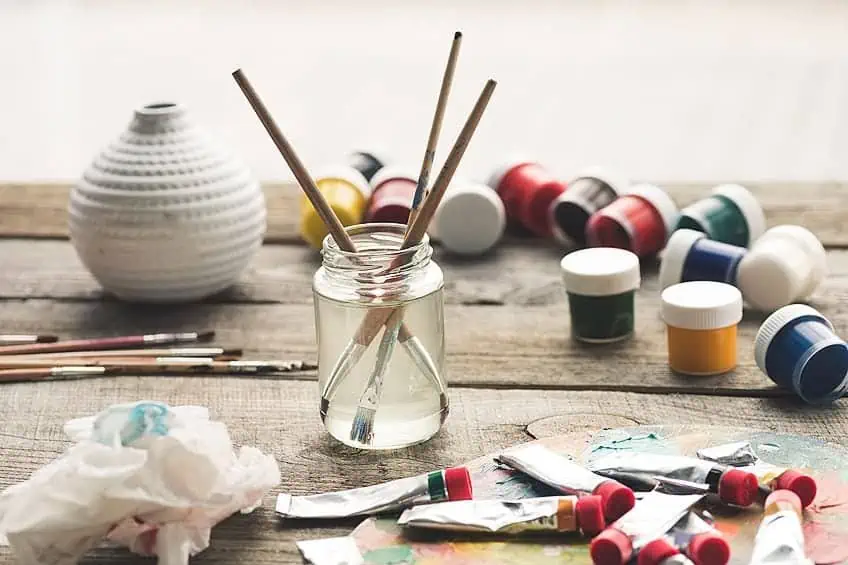
The Best Artist Soap Suggestions
You always have the option to use whatever soap you have available in your cupboards. But, some specially formulated soaps are designed for artist’s use. These soaps work wonders with cleaning paint brushes, having very versatile properties. They might be more expensive than the dishwashing soap you originally intended to use, but they do contain certain conditioning factors which will preserve your brushes’ bristles for a longer period. We have listed a few of our favorites below.
Top Choice: Speedball’s PINK SOAP Brush Cleaner for Artists
This is a miracle paintbrush cleaner when it comes to the question of how to wash paintbrushes and how to clean old paintbrushes.It works wonders when trying to clean off all kinds of paints. Acrylic paints, latex paints, water-based, and even oil-based paints are typically thought to need a thinner solvent to remove the paint. Not only does this product have wonderous skills at cleaning your paintbrushes, but it also maintains the quality of your bristles with the conditioner included in its formula.
- Cleans oils, acrylics and watercolor paints
- Contains a conditioner; leaves no greasy after feel
- Contains no chlorides, no alkalis, no phosphates, no solvents and no alcohol
PROS
- Works well
- No intense chemicals
- Works well will all paints
- Conditioner included in the formula
CONS
- There is only one size bottle, which is 8 ounces
An added benefit of Pink Soap is how safe it is to use, in terms of the environment. There are no alkalis, phosphates, solvents, nor chlorides which are usually very harmful substances to go down your drain.
Value for Money: General Pencil Company Inc. THE MASTERS’ BRUSH CLEANER AND PRESERVER
If you are wondering how to clean old paintbrushes or new paintbrushes for that matter – General Pencil Company has the best bang for your buck. The Master’s brush cleaner and observer offers great value for the money spent on it because it can clean all types of paint from your brush’s bristles.
If your dilemma is about how to remove dried paint from paintbrushes, this product is the best possible solution for you. Not only does it do a great job at cleaning wet or dried paint from your brushes, but, it will also keep the bristles in a beautiful, mint condition. This is all thanks to the conditioner inside the specially made formula.
- Formulated for use with oils - acrylics and watercolors
- Will even remove dried on paints and paint stains
- Cleans and preserves brushes
PROS
- Works well with hard-to-clean stains
- Contains bristle conditioner
- Works well
- Removes wet paint and dry paint
- Work with all kinds of paint
CONS
- One ounce sizes only
Using Fabric Softener to Wash Paint Brushes
When it comes to how to clean old paintbrushes, this is probably the last thing you expected to find in this tutorial, but fabric softener is a very useful product – not only to make your clothes feel and smell like your mother’s rose garden. It can also be used to clean your paintbrushes and this next section will explain exactly how that can be done. The prerequisites for this chore are 2 Tablespoons of fabric softener, four cups of water (warmed), a bucket, and a cloth.

- If you remember our instruction from above, we suggested that you first use a cloth that is highly absorbent to squeeze any residual paint from the bristles as your first step.
- In your bucket, mix the warmed water with the fabric softener together thoroughly.
- Take your dirty paintbrush and swish it inside the water with the fabric softener. When you see bits of the paint pull away from the bristles, you know it is working.
- Continue this process until your paintbrush does not seem to have any paint left to clean.
- When you are satisfied with the previous step, you must rinse the brush off all remaining fabric softener and water mixture. Do this by holding the brush below a faucet of flowing water.
- This is a repeat of the final step, in the above instruction, on how to clean paint off bruises with sap and water. Use a cloth to squeeze any excess water from the bristles and the ferrule of your brush.
Using Solvents to Clean Old Paint Brushes and Oil-paints
If You have ever attempted to clean oil-based paints from the bristles of your paintbrushes, you might have been met with a serious battle, in which the paint won and you are still left with the dilemma of how to clean paint brushes used for oil painting.
In the case that the paint you were working with was oil-based, your best solution for cleaning the brush would be a solvent like mineral spirits or thinners. Because these substances have some highly potent chemicals, some safety precautions should be taken into account before you start. Make sure you have sufficient ventilation so that the fumes do not make you dizzy. Protective clothing, like gloves and an eye mask, is also advised.
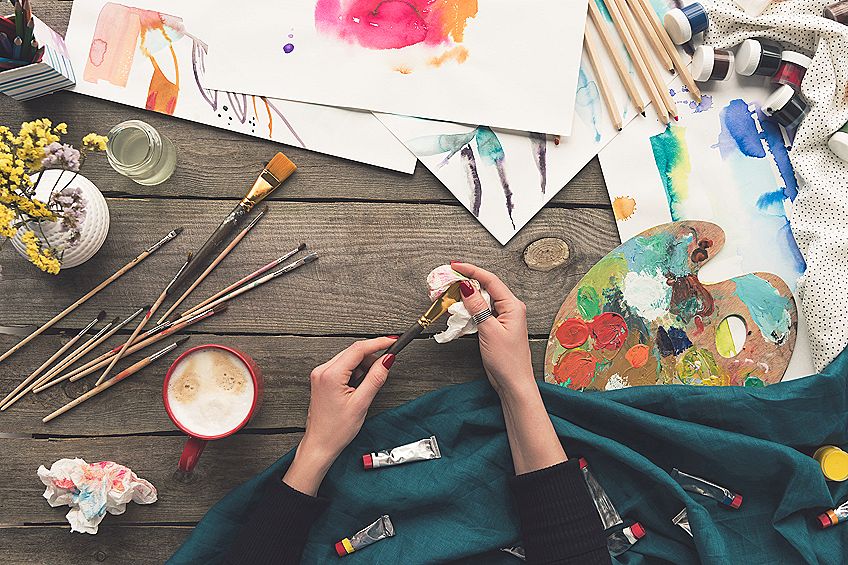
To start, you will need to make sure you have a cloth, the protective gear we previously mentioned, and an old, recyclable bucket or Tupperware. Read on further to learn each step of the process.
- The first step is much like the other steps for using soap and water to remove water-based paints, except you will not use a cloth to squeeze out the excess paint. You will simply attempt to get as much of the oil paint from the bristles as possible using running water.
- Mix the recommended amount of the solvent you have chosen to use to clean your brush with water in the Tupperware or bucket. You can find out the ratio of water to solvent by reading the instructions on the product’s label.
- Dip the brush that is infused with the oil paint into this mixture and swish it around, shaking off the excess paint.
- Once you are satisfied that there is no more paint left on the bristles of your brush, you can first flick out the water from the bristles and the ferrule and use a cloth to squeeze the leftover droplets of water.
- Lay the paintbrush down, at a horizontal angle, so that it dries in the best position.
You might be wondering how to clean dried paintbrushes with crusted paint. For this, you may also use thinners like mineral spirits or paint thinners. The process is very much the same as the above instructions but your paintbrush might need to be left to sit in the solvent to break down the paint that dried. You might need to use your fingers, or a specially designed tool to pick apart the dry paint.
Using Vinegar To Clean Old Paint Brushes
Vinegar is the answer to a lot of cleaning dilemmas. Surprisingly, it is a wonderful method for cleaning your old paintbrushes. This is quite a hard job but it is easy on the planet, which makes it all worth it in the end. For this next part of this tutorial, you will need some white vinegar and a pot for the stove.
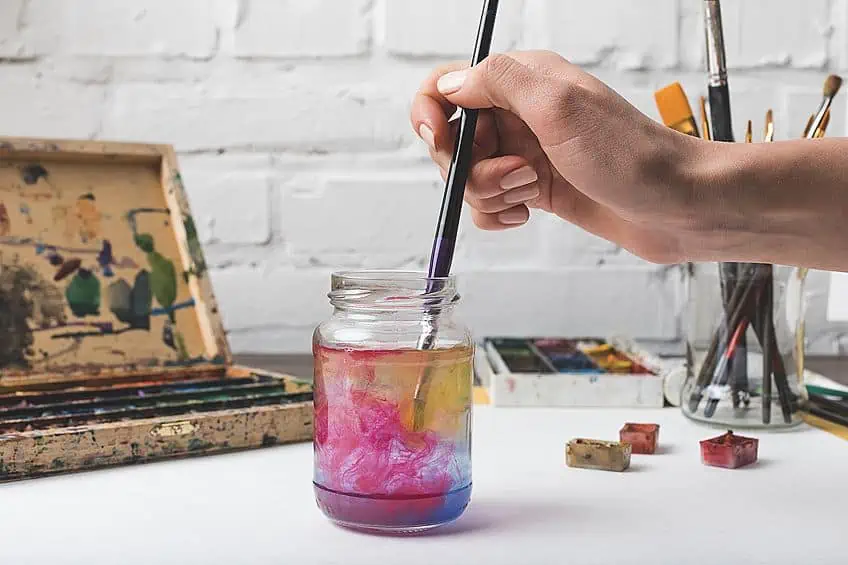
- Get out the put you wish to work with and place it on the stove. Add enough vinegar to cover the bristles of your brushes when you place them facing downwards.
- Turn on the hob, and bring the vinegar in the pot to a boil. The aroma that fills the air will be quite pungent.
- Once the vinegar has boiled for five or ten minutes, you can remove it from the stovetop and allow it to cool down.
- Be careful not to burn yourself on the hot vinegar when you take the paintbrushes out from the pot.
- Using your fingers, gently pull the flaking bits of dried paint from the bristles.
- Once all the dried paint has been removed, you can rinse your brush under some running water.
- If you find that you need to do this again from start to finish, this is not abnormal. A natural cleaning method may be great for the environment, but it is much harder work than using a solvent or soap.
- If you are satisfied, however, you can then rinse and dry your paintbrush and store it appropriately lying flat so the bristles do not get dislodged.
A quick note: If you do not have any white vinegar in your kitchen cupboard, there is still the option to use apple cider vinegar. This is just as effective but it might be a bit more costly in the long run.
Other Practices to Preserve and Protect Your Paint Brushes
Did you know that leaving your paintbrushes unwashed is not the only root of damage? There are other negligent things you could do that might bring in the need to buy brand new brushes, or attempt the process of cleaning them. Below we will discuss some of the ways you can preserve the quality of your paintbrush that does not involve washing them.
Drying and Storing Your Paint Brushes
The ferrule, as we mentioned earlier, is the part of the brush that holds the bristles on the handle. There is a lie inside that part of the brush that keeps everything together, and, this should not ever get wet. This means that when you store your paintbrushes, you must make sure they are dried properly before they are packed away for storage, just in case any of the water droplets seep into the ferrule and dissolve the glue. You should also try to avoid storing the brushes facing upwards, even if you dried them manually, to prevent any remaining water from dripping down into the ferrule.

You might think to store your brushes facing downwards so that all the water droplets fall down and not into the ferrule. This is not advisable, because the bristles will get squished and they will dry in odd positions which will be hard to correct when you need to paint with them. The best way to avoid that is to store your paintbrushes at a horizontal angle, after you have dried them, remembering to squeeze the water out from in between the bristles. Before you store them, you should massage the breasts to sit in the perfect position.
Work on Your Painting Techniques
The length of time that your brushes last is determined by the techniques you use to paint with them. If you were to dip your brushes’ bristles too far into the paint and overload it, they will get more damaged easier because the ferrule gets paint inside of it, which loosens up the glue that holds the brush together.
Remember, you should also avoid pressing too hard with your paintbrush and rather stick to lighter motions. The harder and more vigorous the strokes you paint are, the more damage you will bring to the bristles of your brush. However, eventually replacing your paintbrushes is an inevitable part of this artistic trade, unfortunately. It is something you can not avoid if you want to use certain strokes which display and express emotion.

Another method worth mentioning is to have a specific paintbrush for certain paints. So, if you’re working with water-based paints, then you should have a collection of bruises that you use for that and that purpose only. Also, if you are working with oil-based paints, you should have a separate set of bushes that are only used when working with those types of paints.
If you are negligent with the cleaning of your paintbrushes, over some time with the amount of paint going in and out of the bristles, there is bound to be some build-up of paint that dries in between the bristles. To avoid this, get your fingers to pull apart the bristles so that you can clean between each one, removing any paint that has been left behind.
Frequently Asked Questions
What Must I do to Clean Dried Paint Brushes?
It is always best to use specially designed soaps for artists, which work with cleaning all types of paints. These range from water-based paint types, to oil-based paints. Some of these soaps can even easily clean off that stubborn, dried, crusted, paint from the bristles when someone forgot to wash them after their last use.
What Must I do to Clean a Paint Brush?
The best way to clean your paintbrush is using a preventative method. This means that as soon as you are finished with your painting, you must rinse and wash your brush appropriately so that the paint does not dry and crust onto the bristles, making the cleaning process a whole lot more difficult. For water-based paints, you can use water and soap, but in the case you were working with oil-based paints, more intense solvents are needed.
Must I Wash my Paint Brushes Over a Sink?
All of our sinks have drains that connect back to the main water system. This means that everything you wash down your sink will go back into the same system you drink from! Therefore, all paint brushes that need to be cleaned with chemical solvents should not be washed in the sink to avoid this problem. The same applies to most paints as well. Even if they do not need solvents, the soap in the water is often harmful also to the environment, so, it is best to wash your brushes in a way that you can dispose of the dirty water, solvents, paints in a way that is acceptable to your municipality.
How do I use Household Items to Clean Paint Brushes?
Many people do not want to be exposed to chemicals, so, if you prefer to use household items that are more environmentally friendly, then this is the best option for you. Vinegar is not only eco-friendly and non-toxic, but it is a great substance to get rid of dried paint that has crusted onto the bristles of your paintbrush. If you are wondering how it is done, this process involves boiling the vinegar along with the tips (bristles facing down) in a pot for a few minutes so that the vinegar can break down the crusted paint. This will then ensure that the paint will come off the bristles a lot more easily.
In 2005, Charlene completed her wellness degrees in therapeutic aromatherapy and reflexology at the International School of Reflexology and Meridian Therapy. She worked for a company offering corporate wellness programs for several years before opening her own therapy practice. In 2015, she was asked by a digital marketer friend to join her company as a content creator, and it was here that she discovered her enthusiasm for writing. Since entering the world of content creation, she has gained a lot of experience over the years writing about various topics such as beauty, health, wellness, travel, crafting, and much more. Due to various circumstances, she had to give up her therapy practice and now works as a freelance writer. Since she is a very creative person and as a balance to writing likes to be active in various areas of art and crafts, the activity at acrylgiessen.com is perfect for her to contribute their knowledge and experience in various creative topics.
Learn more about Charlene Lewis and about us.
